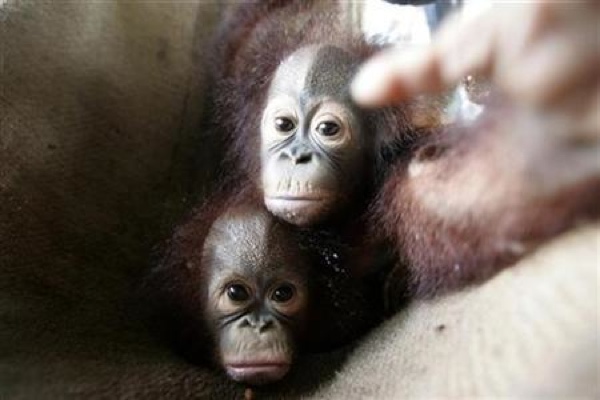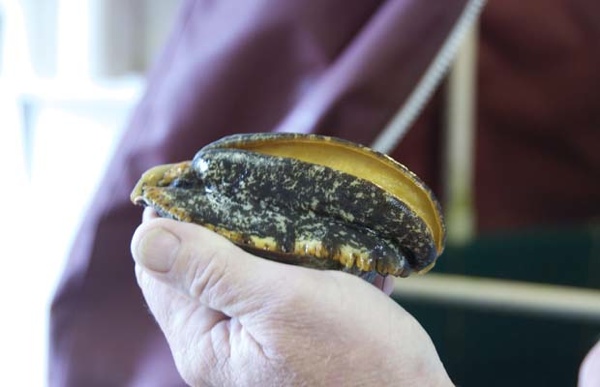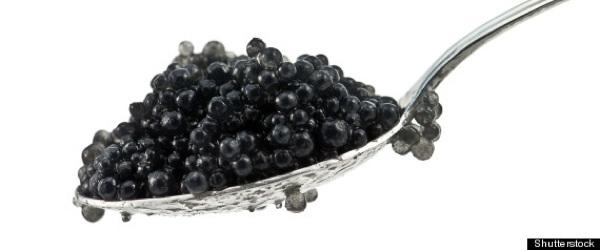 History
History  History
History  Weird Stuff
Weird Stuff 10 Superstitious Beliefs That Once Consumed Entire Cultures
 History
History 10 Bizarre Friendly Fire Incidents in Military History
 Technology
Technology 10 Modern Technologies That Accidentally Imitate Ancient Magic
 Mysteries
Mysteries 10 Mysteries of the Human Genome
 Weird Stuff
Weird Stuff 10 Things So Rare They’ve Only Been Found Once
 History
History 10 Legends Whose Last Moments Undid Their Glory
 Health
Health 10 Futuristic Ideas to Treat Common Medical Problems
 Weird Stuff
Weird Stuff Ten Surreal Attempts to Reverse Baldness
 Facts
Facts 10 U.S. Government Contingency Plans for the Unthinkable
 History
History 10 Odd Things Colonial Americans Kept at Home
 Weird Stuff
Weird Stuff 10 Superstitious Beliefs That Once Consumed Entire Cultures
 History
History 10 Bizarre Friendly Fire Incidents in Military History
Who's Behind Listverse?

Jamie Frater
Head Editor
Jamie founded Listverse due to an insatiable desire to share fascinating, obscure, and bizarre facts. He has been a guest speaker on numerous national radio and television stations and is a five time published author.
More About Us Technology
Technology 10 Modern Technologies That Accidentally Imitate Ancient Magic
 Mysteries
Mysteries 10 Mysteries of the Human Genome
 Weird Stuff
Weird Stuff 10 Things So Rare They’ve Only Been Found Once
 History
History 10 Legends Whose Last Moments Undid Their Glory
 Health
Health 10 Futuristic Ideas to Treat Common Medical Problems
 Weird Stuff
Weird Stuff Ten Surreal Attempts to Reverse Baldness
 Facts
Facts 10 U.S. Government Contingency Plans for the Unthinkable
10 Surprisingly Lucrative Illegal Trades
It’s no secret that illegal business is big business. The illegal drug trade alone qualifies as its own very large sector of the overall black market economy, accounting for 600 billion US dollars in profit annually—roughly 70 percent of the revenue of all criminal organizations in the world. In addition, about 1.5 TRILLION dollars in drug money are laundered through legitimate businesses each year—about 5 percent of global domestic product. If five percent seems small, keep in mind that we’re talking about all of the money produced by the world annually, which is nothing to sneeze at.
Within the other shady areas of global criminal enterprise, you’ll find some very odd black markets—some that you may have thought were urban myth, many involving perfectly legal commodities, and all generating an absurd amount of cash for the crooks involved. Here are ten of the oddest.

Many species of wildlife are subject to poaching and illegal trafficking, but primates—particularly chimpanzees and orangutans—are among the most heavily poached, for a number of reasons. Not only are they actually sold for consumption in some countries (yes, people eat them), they are often used in biomedical research as test subjects, and also sold as pets and to the entertainment industry. While thousands of primates are shipped to the States legally every year—mostly for research purposes, which we still think is pretty reprehensible—around 3,000 more apes are poached, and sometimes acquired legally, even if the means by which they were captured is against the law.
The United States is actually one of the few countries where keeping a great ape, one of the larger primates, is legal. Just over 100 are kept as pets in the US In Indonesia, where a lot of the poaching takes place, laws for possession amount to a slap on the wrist, usually with the animal simply being taken away.
Which is part of the problem—according to a recent United Nations report, over 22,000 apes have been lost from either poaching or poaching-related death since 2005. During that time, a whopping 27 related arrests were made in Africa and Asia—and less than a quarter of them were prosecuted. No wonder ape poaching is a gigantic share of the 10 billion dollar per year illegal wildlife trade.

While the legitimate timber industry has long struggled to mitigate its acknowledged potential damage to the environment, the illegal version of said industry has become an incredibly widespread problem. The United States alone reports 1 billion dollars in lost revenue annually from illegal logging; in countries like Brazil and Peru, it’s estimated that somewhere in the neighborhood of 80% of all logging activity is illegal; and worldwide economic losses probably top 10 billion dollars per year—and that’s just the monetary impact.
Obviously, illegal logging operations aren’t subject to government controls and regulations meant to protect the environment and minimize damage to areas that are in need of protection. Clear-cutting is one of the primary causes of global climate change, and some recent studies suggest the very real possibility that all rainforest wildlife could be endangered within the next hundred years by the one-two punch of illegal logging and global warming. And in an incredibly alarming development, traffickers in illegal lumber are actually starting to emulate—and, in some cases, team up with—traffickers in illegal drugs. If you’re picturing cocaine being smuggled inside trees—that’s exactly right.
Illegal logging constitutes about 30% of the global timber trade, and nets the criminal enterprises involved roughly 10-15 billion dollars annually.

If this sounds a little far-fetched, or like something out of a horror movie, you may be surprised to know that the trade in human organs is quite real—and very big business.
The vast majority of illegally harvested organs are kidneys, as only one is needed to survive. Some desperate “patients” will undergo the illegal operation for as little as $5,000, and equally desperate recipients are known to pay forty or fifty times that much—$200,000 or more. This is prevalent in Middle Eastern and Asian countries, with the Philippines, India and Pakistan having booming markets; China actually sells the organs of executed prisoners, the only country in the world to do so. 4,500 executions take place per year in China, and some experts argue that they are planned around organ extractions.
And yes—while many people willingly give up organs for cash, many other are scammed or forced into the procedure, or made to undergo unnecessary surgeries during which the organs are extracted without their knowledge. A recent World Health Organization study put the number of illegal operations at around 10,000 annually, which potentially makes this a multi-billion dollar black market industry.

The trade in python skins is ostensibly very tightly controlled. The animals are dwindling in number, and the demand for their skins—particularly in Europe, where python skin handbags and designer snakeskin shoes are all the rage—has gone through the roof in recent years. Even in California, where the sale of pythons or their parts has been illegal since 1970, snakeskin items can still be bought at some upscale boutiques—some merchants seem to either be fine with ignoring the law, or are actually unaware of it.
Unfortunately, using skins from illegally poached animals translates to a hell of a lot more profit for those in this trade, and this booming criminal enterprise is actually threatening to outgrow the legal market for the skins. While regulations are in place—and would be effective if followed—in most regions where the practice takes place, they simply are not. As silly as it may seem, this may largely be due to the image of snakes as less-than-friendly, not-so-cuddly creatures—but they are still a critical part of their ecosystems, and are being hunted to extinction at the current pace.
Believe it or not, the annual trade in python skins tallies up right around a billion dollars worldwide—half or more of which is illegal, with the criminal enterprises taking up more of that pie every year.

A fairly recent phenomenon, the sale of human sperm over the Internet has exploded in recent years. And while this may seem fairly innocuous—even helpful, for those having trouble conceiving—at first glance, there are serious complications that lawmakers are having trouble addressing adequately.
Legitimate sperm donors are beholden to strict controls to minimize genetic defects, health problems and the like. The main problem with an individual just selling their sperm directly to another party is the obvious lack of controls—for the vast majority of the “donors”, no medical tests are performed, and the recipients have absolutely no way of knowing what they’re getting. Not to mention the thousands of infectious diseases that can be transmitted through human sperm, which is really the scary part.
While there are laws in place to regulate the sale of sperm or eggs, many of the websites that have popped up have proved very difficult to prosecute—they operate under the guise of being social networking sites, “introductory services” who merely play matchmaker and collect a fee. Worldwide annual profit estimates are hard to come by; one pair of British men were able to sign up 800 women and collect over a quarter-million pounds in a few years with a service of this type.

Abalone are edible sea snails, known as “muttonfish” in Australia and “paua” in New Zealand. They are a delicacy in these regions, as well as in Chile, France and several Asian countries; regulations governing their harvesting are lax or nonexistent practically everywhere except South Africa—which is kind of where the problem lies.
Seafood is a major South African industry, and Abalone is the highest-priced product it produces. In 1995, 615 tons of Abalone were harvested in South Africa; by 2008, it had dropped dramatically to 75 tons, and the South African government ceased abalone fishing that year for fear of completely eradicating the population. The incredible drop in volume over such a short time is attributed almost entirely to illegal harvesting, and the effect of this on the South African economy has been significant.
Populations have dropped similarly, if not quite as dramatically, in Northern California and other abalone-producing regions, where a thriving illegal trade has emerged. Authorities have begun slapping seafood merchants that deal in illegal shellfish with dizzying fines upwards of $40,000, but with poaching being so profitable, it doesn’t look to slow down anytime soon. While there is no hard annual data, red abalone can fetch up to a hundred dollars apiece.

The gall bladders of black bears, and the bile that can be extracted from them, have been used extensively in Asian medicine for centuries. The bile is a supposed cure for everything, from eye ailments to cancer and AIDS, and we include “supposedly” because it has been definitively proven by medical science to have no medicinal properties whatsoever. In spite of that, the illegal trade in this product continues—and the scope of it is absolutely staggering.
Not only are bears poached en masse for their gall bladders and other parts, many Asian countries operate illegal “bear farms”, which are every bit as horrifying as that sounds. Bears are kept in small stalls, fed irregularly and not allowed to hibernate; they are continually surgically “milked” for the bile for a period of time before being killed to extract the gall bladder.
Despite this deplorable practice being thoroughly illegal, the products themselves are—incredibly—legal in many markets, including the United States; in New York City, it was recently found that 20% of markets that carry Asian products openly sell bile and gall bladders. The annual market in illegal bear parts is an unbelievable 2 billion dollars.

Most of us are aware that caviar is a) expensive and b) fish eggs which wealthy people are inexplicably fond of eating. While the concept of black market caviar might seem a bit silly, there are some pretty serious consequences of the trade—mostly for the worldwide sturgeon population, which has fallen by 90% since the 1970s due to overfishing.
A global ban on wild caviar (as opposed to farmed) in the mid ’00s failed to have the desired effect of protecting the population, and may actually have spurred increased black market activity. In 2006, the Pew Institute for Ocean Science called the sturgeon “the most vulnerable wildlife resource in the world”.
Sadly, sturgeons have been around for 200 million years, outlasting the dinosaurs with whom they once shared the planet, and this phenomenon is a serious threat to their continued existence. The demand for caviar certainly isn’t going anywhere—but with its illegal trade raking in three-quarters of a billion dollars annually, the wild sturgeon might be.

In many Middle Eastern and East European nations where alcohol is still prohibited or rigidly regulated, markets in bootleg alcohol still flourish. Some of the consequences, as well as some of the means enacted by governments to crack down on the practice, are enough to boggle the minds of those of us who take a glass of wine with dinner or a couple beers with our buddies for granted.
Countries like Iran and Iraq, where booze is straight up illegal, are known to offer up lashes—dozens of them—for alcohol production, along with the standard fines and jail time; in spite of this, the market for bootleg spirits is so strong that bootleggers simply find it to be worth the risk. So strong that Iranian factories that produce rubbing alcohol were actually forced by the government to spike it with a substance that renders it almost too bitter to drink—proving that, yes, people all over the world will take amazing risks just to get drunk.
This is most terrifyingly illustrated in two recent cases of mass deaths cause by bootleg liquor, in the Czech Republic (20 killed, dozens sickened) and India (102 dead). Again, hard data for annual profit is difficult to come by due to poor reporting in these countries—but consider that the US State of Virginia, where alcohol is perfectly legal, reports annual losses of up to 20 million dollars due to whiskey smuggling, the tip of a tremendous iceberg.

Human trafficking is second only to the illegal drug trade in terms of global annual profit. Nearly three-quarters of this trade is for the purpose you might expect (sex), and much of the rest supplies slave labor—but the splintered markets in black market adoptions are becoming a serious factor as well. In addition to the non-licensed adoption agencies one would expect, there have been cases where legitimately adopted children were simply sold for a profit by their adoptive parents.
These markets are generally not associated with each other, but are isolated and opportunistic—as in the case of southern Brazil, where the large population of blue-eyed, blond haired descendants of German immigrants is mined to satisfy the demand for such babies among Westerners. Russia and other Eastern European countries have also seen markets spring up for this same purpose, while China simply has a surplus of girls for cultural and political reasons.
While seemingly well-meaning, these types of black markets can also contribute to the coffers of criminal organizations that engage in all manner of illegal activities. And while the newborn industry is only a piece of the human-trafficking pie—that’s a 32 billion dollar pie we’re talking about.
Mike Floorwalker obsessively lists things here and on his blog, and occasionally tweets random inanities.








